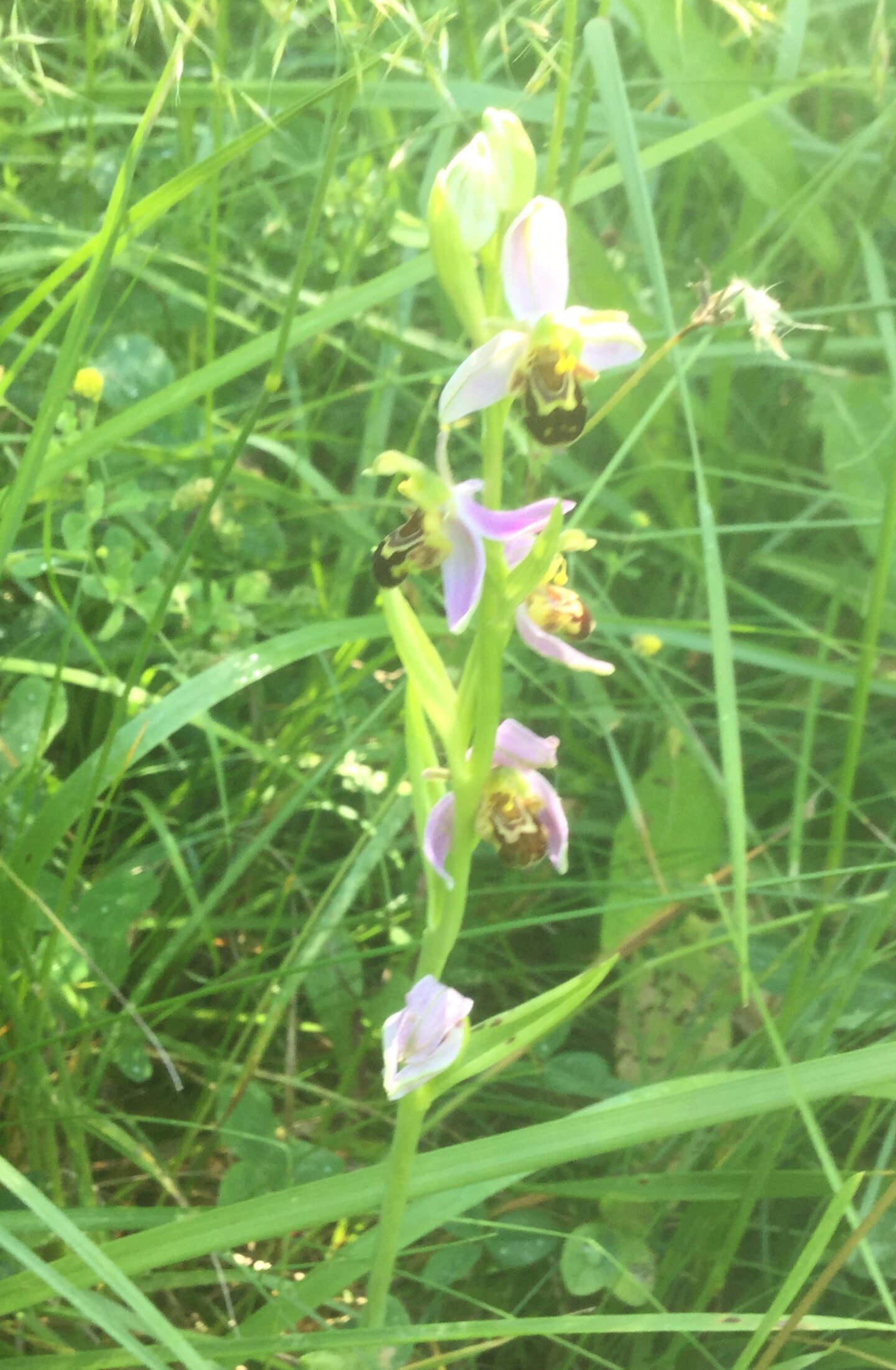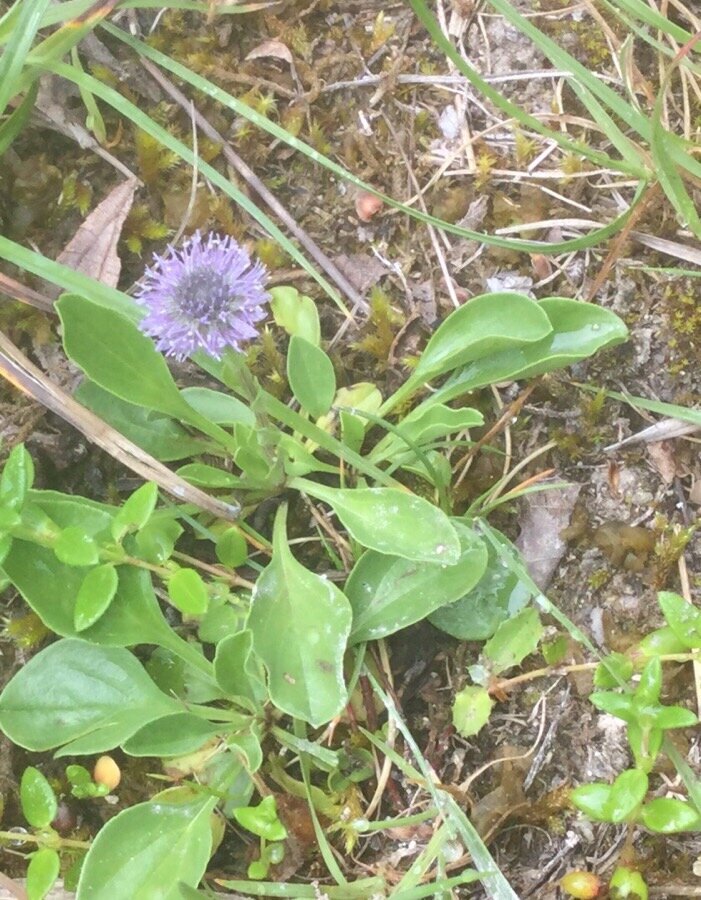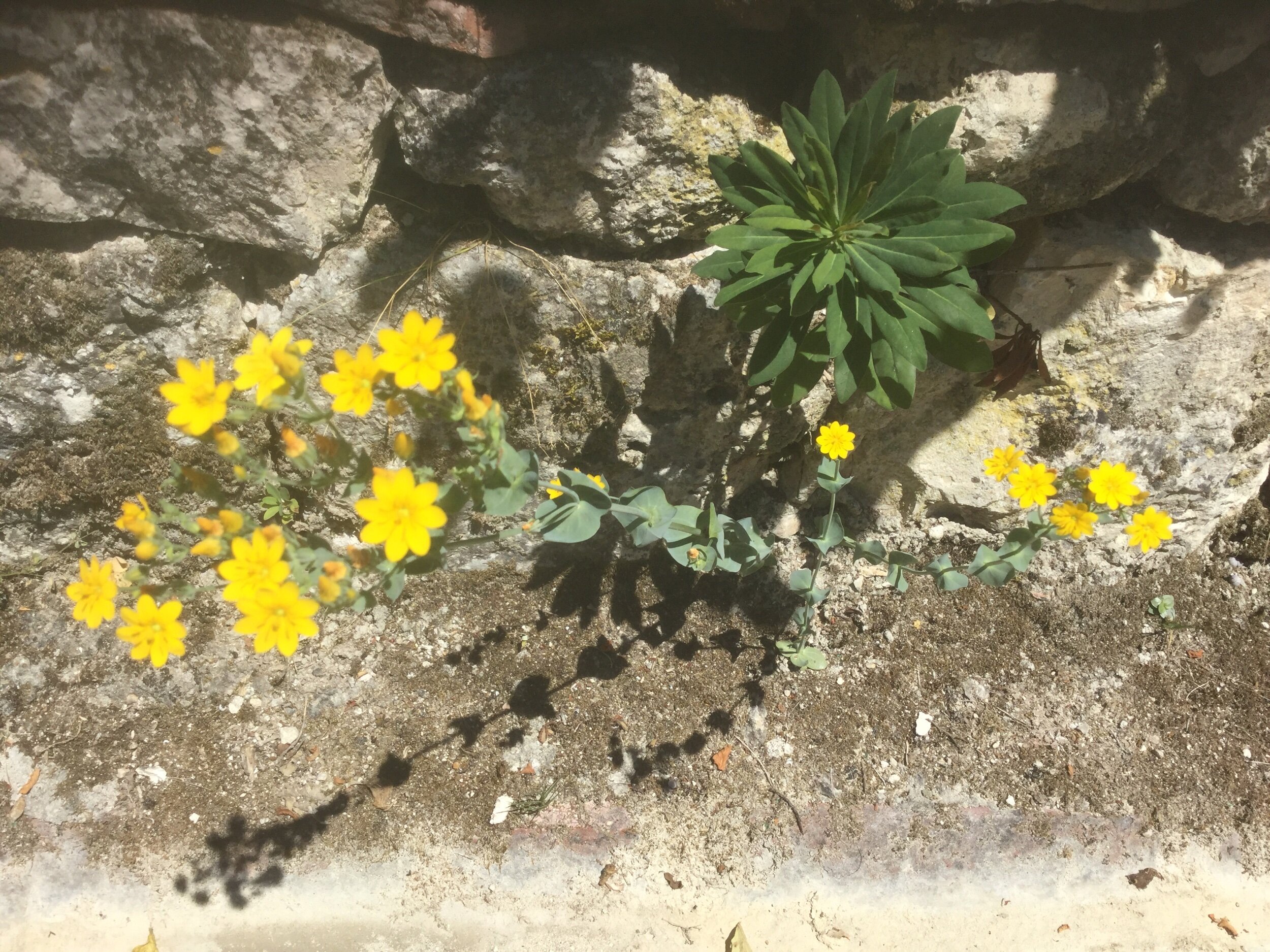We don’t have to worry about ‘rewilding’ at Brel - we have plenty of fields and woods full of interesting wild life. Taking a walk may start out as a form of exercise but soon turns into a wander through the trees and closer inspection of the sides of the paths to find out what’s flowering. There are lots of grasses and greenery and while you have small patches of flowers you certainly don’t have masses of colour.
Orchid purpurea - or lady orchid - one of the first to flower in the meadow.
This year the orchids were tremendous. Not just the normal pink pyramid orchid but also the larger lady orchids and giant orchids. The bee orchids have also grown taller this year so you don’t need to investigate so hard in the long grass. But the stars of the year have been the lizard orchids. They are tall and showy and come late in the season. I had spotted lots in one of the fields and was considering whether to make an interesting flower arrangement when along came the farmer to cut the field.
A field of lizard orchids - an amazing sightt
A bee orchid
The farmer told me that the orchids were very late this year and he had left me a few excellent specimens at the side of the field. I picked up some sad specimens which had been mown down and managed to make an arrangement to enjoy them for a little longer.
Artemis accompanied me on one of my searches for Eli the adventurous cat.
My searches for Eli - our cat who went missing - took me on new paths. While calling for her, I kept an eye out for what was in flower - taking photos of things that I did not recognise. I have a UK wild flower book and a Mediterranean one which is much more use as we are on the edge of the Mediterranean area and hotter summers mean more plants from the hot south. More interesting is the app that I have downloaded (PlantNet) which has had a very good level of success and if you can take a good photo of the plant you need to identify, it is much quicker than going through pages and pages of a book.
Red helleborine orchid
Some of the flowers here in SW France are the very same flowers that I used to collect on walks when a child in Kent and Sussex - often taking them home and pressing them and keeping them in a scrapbook. They include grandmother’s toenails (bird’s foot trefoil ), purple clover, vetch, deadnettle and buttercup. All these can survive in our chalky dry soil although not in the luxuriance of a damp English meadow. But in the hills, the woods and the fields there are many that I didn’t recognise and had to look up.
Bituminaria bituminosa - - pitch trefoil. The stalks smell of bitumen (tar) when crushed. it’s everywhere in the woods at the moment.
Shrubby globularia is a pretty little daisy flower that I don’t think that I’ve seen before.
Field eringo - a wild form of the eryngium I have in the flower garden. It’s all over the fields and very spiny and you have to remember to wear good stout footwear .
This is a totally new one on me. I could tell it is part of the pea family. It is large yellow rest-harrow which grows in a sort of mount and is a typical garigue plant.
I think that this is my favourite of the moment - wild catanache or cupidone. The photo doesn’t do justice to its deep blue colour. I have some purple catanache in my cutting garden but this blue colour is superb.
I had to include this strange little plant with its distinctive grey green stem and leaves. When the flowers finally came out they are small and star shaped and bright yellow>. They close up when the sun isn’t around. They are everywhere this year - in the garden as well as in the woods. I looked the plant up I found that it is called quite simply yellow wort. I don’t think that I will forget that same - talk about does what it says on the label!
These are just some of the new and interesting plants I’ve come across recently. The fields and woods are full of wonderful specimens and I have promised myself to try to identify grasses a little better. I spent quite a bit on fancy grass seeds for the flower garden this year and I’m pretty sure that most of them are already growing close by.
A walk in the dewy morning in insubstantial footwear resulted in many insect bites up my legs and as I bent over to get better photos the critters got the chance to attack my torso too. Time to get the antihistamine out and stop scratching!
Postscript
My walks to find Eli revealed no sign of her. After 3 weeks and 1 day - our new neighbours who didn’t know we had cats, posted photos of a cat visitor on the local Facebook page. Bridget - key team Brel player - saw the photos as she checked up on Facebook one evening. We found Eli in the morning at the next door farmers - one place we were pretty sure she would never go as they have the hunt dogs who are quite given to howling. As Peter asked the farmer if he had seen her, she strolled into the courtyard!
Ori was very pleased to have her back.












